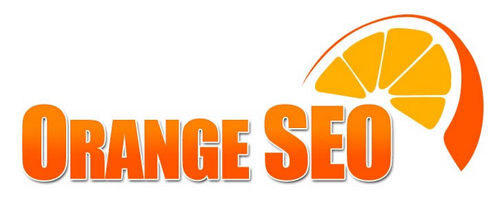Amazon SEO, or Search Engine Optimization, is creating a product listing with maximum effectiveness using Amazon’s search engine. Using it properly can boost your traffic, exposure, and your sales.
But Amazon SEO seems to be an elusive target, even for sales veterans and established businesses. So, to help you rank higher on Amazon, check out our guide to all the activities you can do to optimize your Amazon product pages using Amazon’s latest update: the A10 Algorithm.
How does Amazon’s A10 Ranking Algorithm work?
The Amazon A10 algorithm works as a more effective form of its predecessor, the A9 algorithm. The improved A10 uses a behind-the-scenes system that finds the most relevant products for the customer.
The biggest improvement from A9 to A10 was a shift from the high reliance on PPC sales. The A10 algorithm’s biggest improvement comes from its focus on relevant organic sales. This means companies who rely solely on PPC sales will spend more, resulting in less profit.
Below are a few more ranking factors you should know when optimizing for the A10 search algorithm:
Overall sales history - The more successful sales you have with your entire product line, the more likely you are to rank higher.
Click-through rate (CTR) - The ratio of customers who see who click on (visit) your product compared to the number of views (impressions) it has.
Seller authority - A larger aspect of sales history that includes your seller feedback rating and the overall customer value you offer by having a larger product line.
Off-site traffic and sales - The A10 algorithm is placing a higher emphasis on companies that have an established off-site presence to generate sales.
Despite what you might see from the article, there is still value in creating advertising campaigns. However, the A10 algorithm tells us that Amazon wants you to leverage the power of SEO.
How to rank higher using six proven methods
If you want to increase your sales on Amazon, here are six proven methods you can use today. Be sure to consider all of them, as these SEO-based improvements do not work by themselves.
Perform keyword search and optimize product listings
Arguably the most important part of optimizing a product listing is finding relevant keywords. Keywords are the things people search for to find your product. For example, if they search “blue memory foam mattress with included headboard,” your product will include those features and be prominently displayed.
Good keyword targets are specific and focus on three (or more) words. The example above shows exactly what a customer could search for. When keywords are longer, they are more likely to include these features. These search terms that are three or more words are known as long-tail keywords.
Long-tail keywords are less competitive and more likely to meet your customer’s needs. They also include the more competitive short-tail keywords (below three words) which you might rank for as you build your seller profile.
To see an example of this in action, look at this Album Cover Wall Collage Kit:
The title includes multiple target keyword variants. Most of them are long-tail, specific, and mention important features (e.g., 4 x 6 in). To find this in your search, look at your potential competition to see how they do it.
PRO TIP: be careful to avoid keyword stuffing, this involves putting the keyword repeatedly throughout your product description. This will reduce your chances of ranking high.
For the research process, make use of third-party analysis tools (like AMZScout). These tools can help you identify potential keywords your competitors aren’t making use of and overtake the same keywords your competitors are using.
2. Get More Product Reviews
Customers spend 31% more on businesses that have excellent reviews. This is no exception on Amazon, as the power of social proof is compelling for any target audience.
Product reviews are often a deciding factor for all potential customers. Without them, you’ll need to find another way to convince potential customers. The first sale is often the hardest.
To encourage customer reviews, ask for them. You can do this by making use of Amazon’s Request a Review feature. You can find this on your Seller Central dashboard.
Otherwise, you can ask for a review by putting in a product insert. These inserts can be little cards that thank the customer for buying and provide them instructions on how to leave you a review.
PRO TIP: Avoid asking for explicitly positive reviews or providing incentives for reviews. Both are against Amazon’s Terms of Service, which can get you removed from the platform. Always ask for honest feedback.
3. Optimize your listing with high-quality images
If you search for online products, what are you most likely to buy? A product with a high-quality, professional image or a product that looks pixelated?
Most customers would agree with you, as high-quality products and images go hand-in-hand. All of Amazon’s top products follow these guidelines. It improves the overall customer experience.
However, you’ll also want to see the product displayed in multiple image types. For a consistent example, look at the clothing product category. Here’s an example below:
Clothing items have to follow stringent guidelines but provide you with great examples of the power of images. Clothing items are taken from multiple angles, often showing useful sizing charts, and sometimes showing videos.
To get customers engaged with your product, you need to show customers using it. You can also use images to focus on product benefits and features.
4. Price Competitively to Win The Amazon Buy Box
Price optimization is one of the most important aspects of boosting your conversion rate (sales) on Amazon. Optimizing your price simply refers to you pricing your products competitively.
Competitive pricing is often one of the most important aspects of winning the buy box. The Buy Box is when you are the company behind Amazon’s “buy now” button. This makes it much easier for people to purchase your product.
To price competitively, you need to see what your competition is doing. Often, the most competitive price is along the lower end. Meaning competitive pricing is often cheap pricing.
Of course, this means you might lose money from reselling specific products. For example, trying to resell a product Amazon sells directly is impossible. Amazon is a larger company, so it likely can offer lower prices than you can.
Regardless of how aggressively you price your products, avoid having a negative profit margin. In an ideal world, you don’t want to lose money on your sales.
5. Use Amazon PPC to Rank Higher for Organic Results
Despite the A10 algorithm emphasizing more organic sales, PPC (Pay Per Click) is still the best way to get more than a new seller. Often, new sellers lack the clout to rank using Amazon SEO. By buying the keywords and getting good results, Amazon will take notice of you.
Earlier, we mentioned the importance of keyword research and optimizing your listing. Using those same target keywords, you should also pay to rank for those long-tail keywords.
Again, your product meets those search needs because it is the most relevant option. So ideally, buying the keyword should mean you can expedite meeting those needs.
Your first keyword and ad likely won’t be your best work. Likely, you’ll want to run multiple tests tweaking minor elements between each ad to find the best one.
PRO TIP: You will never want to erase advertising from your budget. However, you might shift some of that ad budget into more SEO efforts as you grow as a seller.
6. Respond to Your Clicks and Bounce Rate
SEO is an ever-changing game where you are constantly tweaking your strategy. Amazon advertising also follows the same strategy, responding to two important factors: Click-Through Rate (CTR) and Bounce Rate.
Click Through Rate (CTR), is the number of clicks you get on your product compared to the number of views of the product. Meanwhile, Bounce Rate refers to the number of people who leave your product page without making a purchase.
When your CTR is low, that means your advertising or product page is ineffective. Other sellers might make a more compelling offer through their ads or search results.
If people are clicking through to your page and not buying, that means you have a high bounce rate. This often means there’s some specific aspect of your product page that isn’t working.
Knowing the differences between each tracking area can help you determine where to fix problems. This saves you from wasted time and money on initiatives that aren’t helping your business grow.
Conclusion
Having a good Amazon SEO strategy requires a consistent, long-term effort. To turn potential customers into raving fans, you need to put in the work. Amazon will eventually recognize this effort, promoting your awesome products for you. Below is an Amazon SEO infographic to help you learn visually the important ranking factors.








